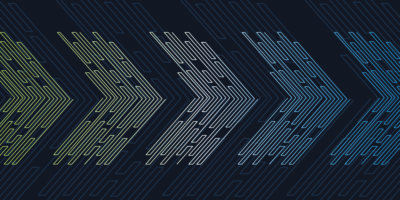5G network slicing enables providers to offer highly granular control over how users consume and create customized network slices.
Network slicing has been touted as a critical capability for monetizing 5G. In fact, Gartner predicts that network slicing for 5G will become a key differentiating feature in the next one to three years. However, true end-to-end 5G network slicing will be a challenging initiative for most service providers to implement, given the scope and scale of control that network slicing will require.
In order for network slicing to evolve from relatively simple proof-of-concept demonstrations to production-scale implementations, service providers will need to evolve not only their tools but their operations processes as well.
In a typical service provider environment today, activities across domains are loosely-connected. We typically see the RAN (Radio Access Network) team operating independently from the mobility core team, which operates independently from the transport network team. This applies across planning activities, network creation, and operations. Of course, there is some level of cross-team coordination necessary for the service provider to deliver a functioning service – capacity planners and architects will look across the domains, when necessary, to ensure that sufficient capability and capacity are engineered into the network.
For 5G network slicing to effectively change this current model, consider these four crucial principles for successful implementation:
- There are more than five domains (CSMF, NSMF, RAN, 5GC, TN)
- Customized frameworks are essential
- Exposure will be a key enabler and differentiator
- Operations will be more difficult than creation
More Than Five Domains for Network Slice Management – Understanding All Five
The 3rd Generation Partnership Project (3GPP) defines five key functions/domains within the 5G network slice management model:
- Communication Service Management Function (CSMF) – translates a service request into network slice requirements
- Network Slice Management Function (NSMF) – coordinates the creation and management of network slices across the subnets (domains)
- Three types of Network Slice Subnet Management Functions (NSSMF) – RAN, 5G Core, and Transport Network all manage their respective slice components
Each of these functions has highly specialized requirements – for example, the NSMF must be capable of integrating across the domains to ensure the proper creation and management of a potentially large number of slice instances, while the NSSMFs must be designed to interact with specific types of network functions appropriate to their domain. The RAN NSSMF will be optimized for talking to RAN elements, while the 5G Core NSSMF will have a totally different set of interfaces, configurations, and services it must manage.
The Transport Network (TN) NSSMF will have a unique set of challenges, as there are actually multiple networking domains that will fall under the TN umbrella – backhaul/xhaul components, along with data center networking, optical networking, and cloud networking are all considered in scope for the TN NSSMF. In my experience, it is useful to consider the TN NSSMF as a multi-domain environment, an environment that may require multiple platforms and tools that can integrate across the different transport network technologies to perform slice management activities effectively and efficiently.
Customized Frameworks are Essential – Addressing Distinctive Environments
While at an abstract level, every mobile operator environment looks the same – there is a RAN, they have transport networks, and they have 5G core network functions – the reality is that each environment is unique. No two mobility providers have an identical set of vendors, Operations Support System (OSS) / IT Service Management (ITSM) systems, and operational models. For example, some mobility providers also own the transport circuit and fiber that runs out to their regions and cell sites, while others lease connectivity services from wireline providers. Additionally, a number of mobility providers have begun to work with hyperscale providers to provide or augment their edge strategies. All of these differences will mean that each mobility provider will need to consider which aspects of their infrastructure they will have direct control over and which aspects they will need to rely on a third party to provide. In the cases where a third-party provider is present, mobility providers need to coordinate with these parties and agree on the level of exposure and participation that can be committed to in order to implement network slice management. So, while each service provider may be conforming to the 3GPP network slice management framework, each implementation of that framework will look different. This will make customization a necessary activity.
Exposure Will be a Key Differentiator and Enabler, but There is Risk
The 5G network slicing framework definition includes provisions for service providers to have the ability to selectively expose portions of their network slice management infrastructure. This will enable providers to differentiate from their competition by offering their customers highly granular control over how they consume and create customized network slices. However, this will also require the service providers to exert control over how and when their customers can request changes and over what kinds of changes will be permitted at any given time to ensure performance and compliance with service level thresholds.
This opportunity has significant risks if not executed properly. Service providers will need to carefully consider the level and type of control they expose to their customers while ensuring that they mitigate the risk with an effective monitoring and assurance framework.
Operations Will be More Difficult Than Creation, so Plan Accordingly
Early proofs-of-concept for 5G network slicing have demonstrated that the technical building blocks exist to perform end-to-end network slicing. However, the real challenges will come when operations teams become responsible for managing a collection of network slice instances across their mobile network. Processes like change management will need to evolve to include considerations on the impact for dynamically-created slice instances. These processes will be new to most operations teams and will require training and tools that currently do not exist in most operator environments. We anticipate that the difficult work will not be in creating the slices but in evolving the day-to-day activities performed by operations teams to ensure that the network slices are healthy and will be managed. This will require a much higher level of coordination across the RAN, 5G Core, and transport teams than exists in most mobile operators today.
While these four principles come with unique challenges, there are huge opportunities for 5G network slicing to open additional business streams for the mobile operators. The successful operators will be those who understand the technologies and who can effectively transform their tools, people, and processes to enable the technical benefits while managing the risks.
You can learn more about how Itential helps Communications Service Providers automate across their most common and complex use cases, check out our full list of CSP solutions here, including 5G automation, or schedule a demo with one of our experts here.
Article originally published on Network Computing






